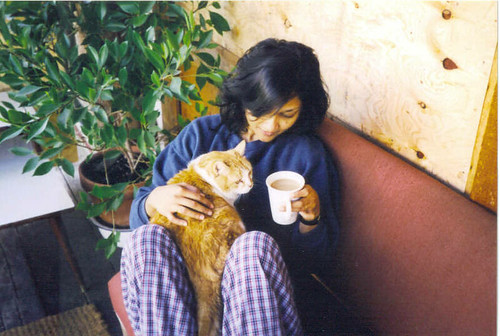The Truth

The Truth
by Terry Pratchett
Imagine a world without books, without printed matter. Of course, we can trace back the approximate point in history when the written word was passed along from manuscript to engraving to printing as we know it today.
What if we can step back in history somewhere around the time engraving was at its height and printing was unheard of? That is exactly where Pratchett takes us in The Truth.
Through his characteristic wit and humor, his incisive observation of human nature, and his ability to layer ideas combining history and fiction, Pratchett narrates the story of William de Word and his band of dwarf assistants who pioneered the Printing Press and the Newspaper.
An engraved page was an engraved page, complete and unique. But if you took the leaden letters that had previously been used to set the words of a god, and then used them to set a cookery book, what did that do to the holy wisdom? For that matter, what would it do to the pie? As for printing a book of spells, and then using the same type for a book of navigation – well, the voyage might go anywhere.
What is freedom of the press? We get a glimpse of this through the exchanges between William de Worde and Lord Vetinari, as well as through the candid discussions with Commander Vimes, not to mention the dogged determination of de Worde to simply write "the truth" (as he sees it), in his publication, "The Ankh-Morpork Times" (motto: The Truth Shall Make Ye Fret).
How and when did adding images to accompany the printed word come about? Otto Chriek can answer that. A reformed vampire, he has a some out-of-the-box ideas regarding photography, even if he has to explode into dust and re-materialize to implement his ideas every time.
The main plot might not allow for many surprises, but the story has its share of twists and turns and outrageous situations that lead to laugh-out-loud moments as well as A-ha! moments. As with most of Pratchett's books, a good dose of our own limitations and sociological inconsistencies are presented unobtrusively through the characters and their actions, albeit set in a parallel world.
One of the strengths of Pratchett's books, apart from magnificent writing and inimitable humor and wit, is the development of characters. I first encountered Gaspode in Moving Pictures (I've been reading Discworld novels out of order), and was immediately impressed with not only its potential but its brilliance.
I have unabashedly admitted to being a die-hard Pratchett fan several times here in my blog. Next to P.G.Wodehouse, Pratchett is my writing guru (even if parenthetically). It is a gift to string together mere words that are accessible to all, but in such a way as to leave the reader awe-struck at its shades and depths, all the while making them keel over laughing.
Having said that, if this were the first Pratchett book I picked up, I'd probably be amused and entertained but not agape and head-over-heels like I was with Mort or Small Gods or Monstrous Regiment.
A high-level conspiracy seeks to frame the Patrician, the de facto ruler of Ankh-Morpork, depose him, replace him with a puppet, and carry out their hidden agenda. Sounds familiar?! Well, de Worde, with the help of Gaspode (who remains the Anonymous Source) uncovers the "truth" and to his horror finds that it involves his own estranged arrogant and aristocratic father.
Should he expose his own father? What is the "greater good" in this case? Does the "public" really need to know "the whole truth"? Incidentally, who is "the public"?
Events unfold as they should and all's well that ends well, of course. But along the way, we laugh, we think, we hyperventilate, we scream, we nod vigorously, we cheer, we drop our jaw, we suspend disbelief, and we allow ourselves to be completely entertained and enlightened.
Labels: book review, fiction, Terry Pratchett


0 Comments:
Post a Comment
<< Home